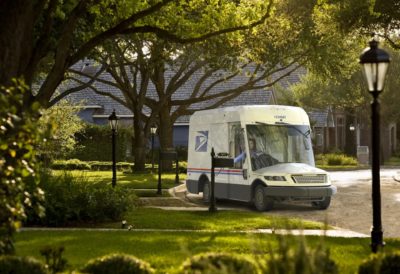A rendering of the new USPS mail truck, which may be equipped with a gasoline or electric drivetrain. U.S. Postal Service
Shortly after taking office in January, President Joe Biden directed federal agencies to procure “clean, zero-emission vehicles,” but work toward that goal has been slow — just 10 percent of new mail trucks ordered by the United States Postal Service are expected to be all-electric. If the federal government were to accelerate its EV push, it could save taxpayers billions of dollars, according to a new report from Atlas Public Policy released by the Electrification Coalition.
Given the lower cost of fueling and maintaining electric vehicles, and their smaller environmental impact, plug-in cars — despite higher upfront osts — are often cheaper over their lifetimes than comparable gas-powered cars. By 2025, the government could replace 40 percent of its light-duty vehicles and buses not owned by the Postal Service with cheaper plug-in alternatives, according to the report. By 2030, it could replace 97 percent of such vehicles with cheaper EVs, for a lifetime savings of more than $1 billion. Electrifying Postal Service vehicles would deliver even larger benefits: By 2025, it would be possible to replace 99 percent of mail trucks with EVs for a savings of $2.9 billion.
“The federal fleet provides a unique and important opportunity, as one of the largest fleets in the country, to help prioritize the market and encourage transportation electrification to happen much more quickly,” Electrification Coalition executive director Ben Prochazka told reporters.
Electrification could also serve President Biden’s larger aim of encouraging the adoption of EVs. By electrifying its fleet, the government would demonstrate that EVs are a workable alternative to gas-powered cars, Nick Nigro, the founder of Atlas Public Policy and a co-author of the report, told Utility Dive.
“Everybody sees a mail truck that either delivers mail directly to their house, or they see them parked,” Nigro said. “Having them move more rapidly toward electrification will be a great benefit from an awareness perspective and, as our analysis showed, an economic perspective.”


